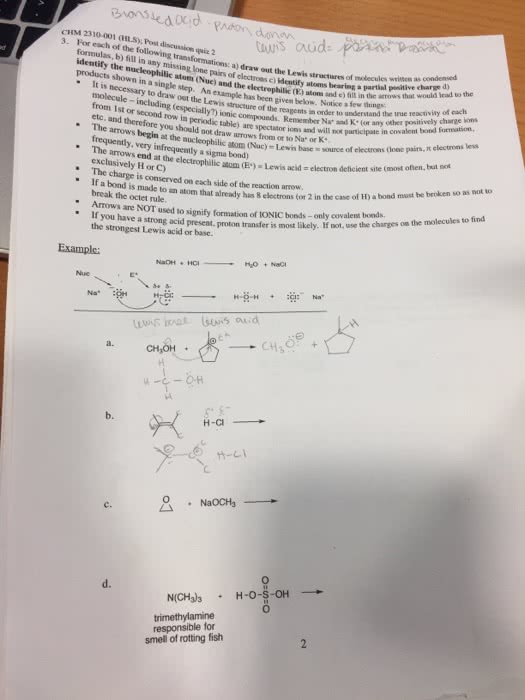CHM 11600 Lecture Notes - Lecture 12: Conjugate Acid, Ph, Covalent Bond
36 views3 pages
6 Apr 2015
School
Department
Course
Professor
Document Summary
Chm 11600 - general chemistry - lecture 12_lewis acids and bases. Definition is based on the transfer of electrons (analogous to the bronsted definition based on the transfer of protons. The lewis definition is broader than the bronsted definition. The proton (h+) is a lewis acid because in order to participate in any reaction, it must accept the electrons from the other compound. Other lewis acids include compounds transition metal ions (m2+) and. Lewis bases have a lone pair of electrons to donate, including species like nh3 and h2o. Lewis acid-base reactions typically form a new covalent bond in an adduct molecule. Ha and a comprise a conjugate acid- base pair. When an acid donates a proton, it becomes its conjugate base. When a base accepts a proton, it becomes its conjugate acid. A weak acid reacts with water to make h3o+ and the weak acid"s conjugate base.
Get access
Grade+20% off
$8 USD/m$10 USD/m
Billed $96 USD annually

Homework Help
Study Guides
Textbook Solutions
Class Notes
Textbook Notes
Booster Class
40 Verified Answers
Class+
$8 USD/m
Billed $96 USD annually

Homework Help
Study Guides
Textbook Solutions
Class Notes
Textbook Notes
Booster Class
30 Verified Answers
